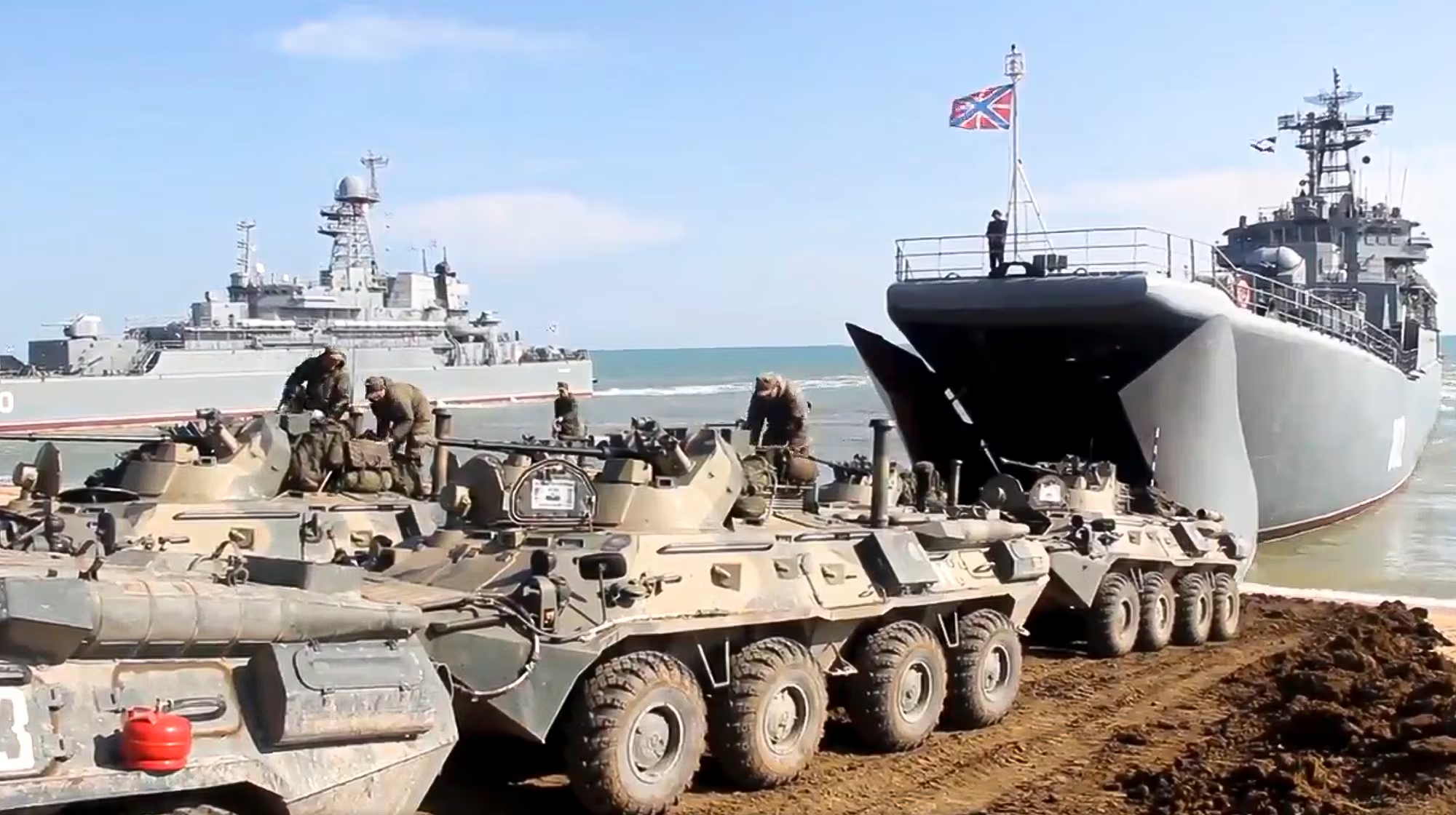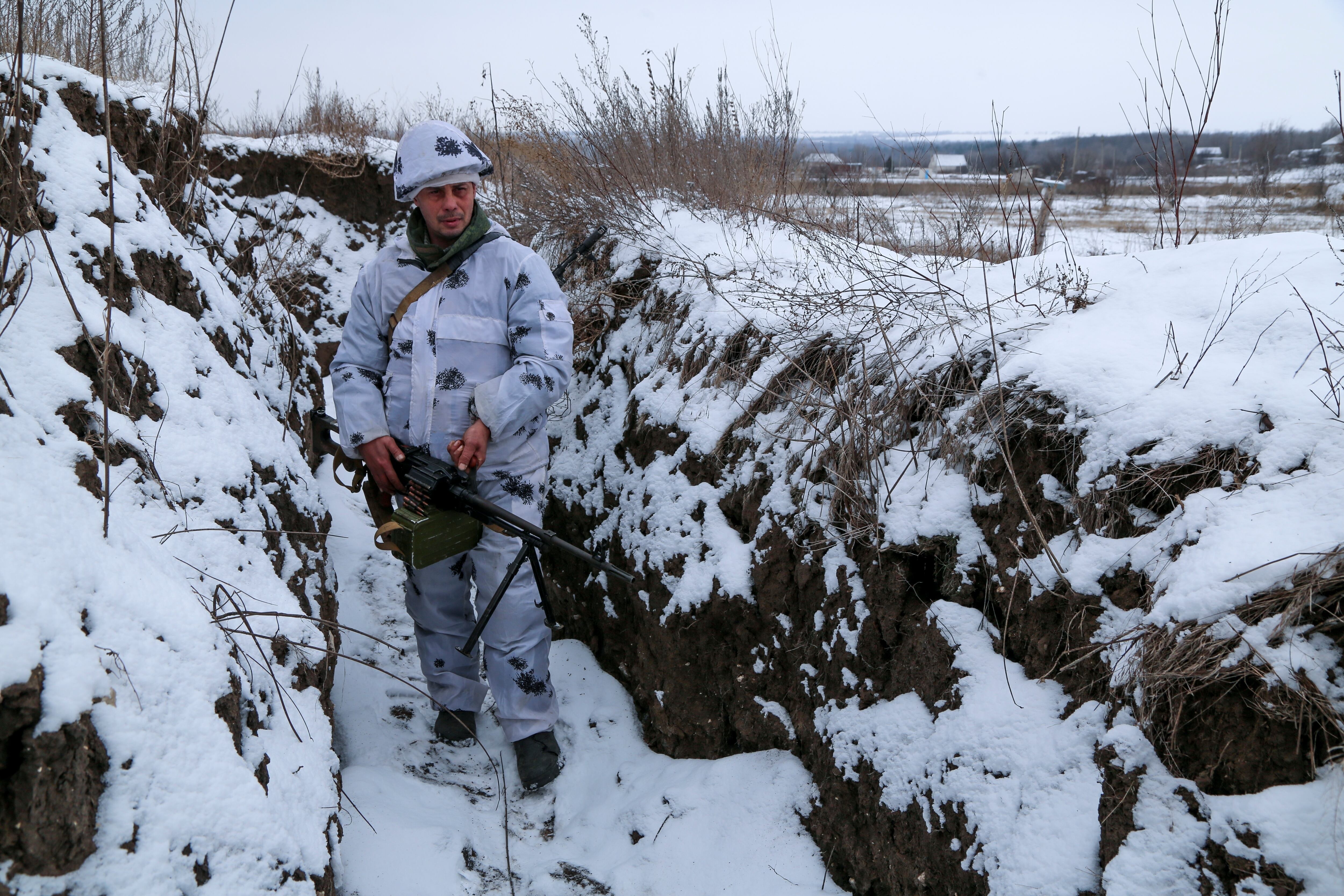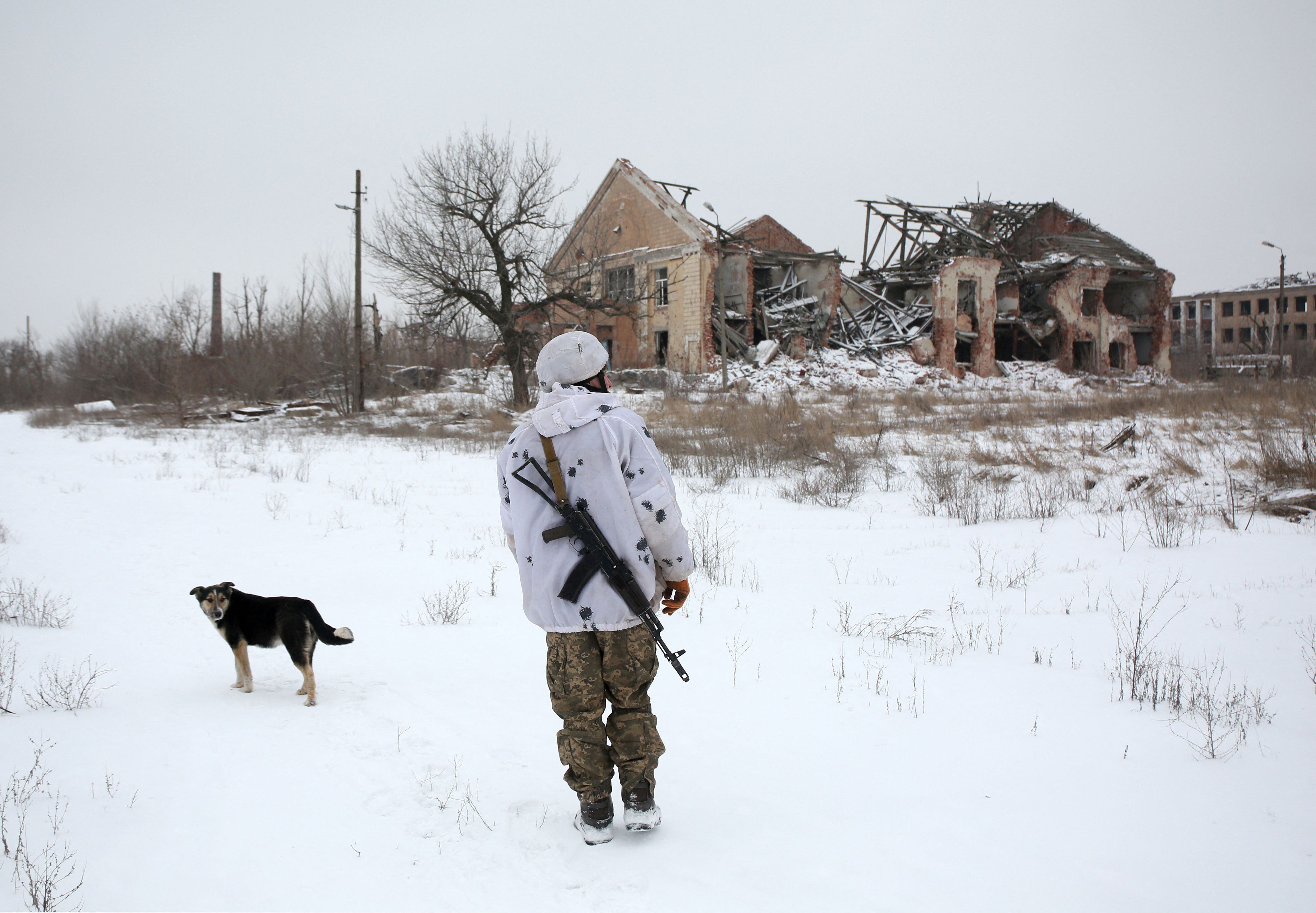Though Russia continues to build up its forces around Ukraine —even as negotiations to tamp down tensions continue — it is not enough yet to carry out a full-scale invasion, according to the latest Ukrainian military assessment shared exclusively with Military Times.
“By now, the Russian military contingent near the Ukrainian border is insufficient to carry out a large-scale armed aggression against Ukraine,” according to the assessment. “The Armed Forces of Ukraine are ready to protect Ukrainian territory and the Ukrainian population.”
Still, Russia is steadily increasing its forces near the border with its former republic, according to the Jan. 27 assessment.
There are now more than 109,000 Russian ground forces arrayed around Ukraine, according to the assessment, plus an additional 21,000 Russian air and naval troops, for a total of more than 130,000. The Ukraine assessment says that Russia has deployed 58 battalion tactical groups near the border, which are on high alert.
That represents more than a third of Russia’s BTGs. There are about 170 BTGs operational in the Russian army today, Defense Minister Sergey Shoigu told the Tass news organization in August.
“A battalion tactical group is a temporary operationally flexible formation,” according to Tass. BTGs are “set up on the basis of a battalion and attached artillery, air defense, engineering and logistics support units for combat operations as part of motor rifle and tank brigades. Aviation groups, special operations forces and other units can also be attached to a battalion tactical group to accomplish assigned missions.”
RELATED

They continue to head near Ukraine, according to the Ukrainian military assessment.
“Russia continues to redeploy troops to Ukraine’s border to maintain tensions in the region and political pressure on neighboring states,” according to the assessment. “In this way, the [Russian Federation] creates new offensive groups along the Ukrainian border and in Belarus. It redeploys part of its troops from the central and eastern regions of the [Russian Federation] to its western border and on the Belorussian territory. Some of them will remain there on a permanent basis.”
In addition to troops, the Russians are moving armor and other equipment toward the Ukrainian border, the assessment states.
“Tank, motorized and artillery units from the Central Military District of the Russian Federation continue to be transferred to the areas near the Ukrainian border in the Bryansk, Smolensk and Kursk regions,” according to the assessment. “Tank, motorized and artillery units from the Eastern Military District of the Russian Federation as well as Russian airborne units are redeployed to Belarus. The last ones are aimed to regions along the borders of Belarus with Ukraine and Poland.”
Russia continues to move forces into Belarus, according to the assessment. A joint Russian-Belarus exercise, named “Allied Resolve 2022″ is going to be held in February in Belarus. Tens thousands of Russian and Belorussian troops are expected to take part.
In November, the head of Ukraine’s defense intelligence agency told Military Times that a Russian attack on Ukraine could involve an incursion through Belarus.
Russia has denied any intention to attack Ukraine, instead blaming Ukraine, the U.S. and its allies for fomenting trouble. The Russian embassy did not immediately reply to a request for comment Thursday morning.

“The situation on the temporary occupied territories and around Ukraine remains difficult,” according to the assessment. “The Kremlin continues to take measures to thwart Ukraine’s Euro-Atlantic aspirations and aggravate the security situation in order to put pressure on our country and the West and to regain full control over Ukraine and split the EU and NATO. The latest Russian activities undermine security in Eastern Europe.”
Meanwhile the ongoing war between Ukraine’s military and Russian-backed separatist forces in the eastern part of Ukraine continues.
Between Dec. 22, 2021, and Jan, 24, 2022, Russian-backed separatist forces conducted nearly 90 artillery attacks, resulting in four Ukrainian troops killed and another 11 wounded, the assessment states.
In all, about 14,000 people have died since Russia annexed Crimea and invaded eastern Ukraine in 2014.
The U.S. is reacting to the situation. The State Department on Sunday ordered the families of all American personnel at the U.S. Embassy in Ukraine to leave the country amid heightened fears of a Russian invasion.
The department told the dependents of staffers at the U.S. Embassy in Kyiv that they must leave the country. It also said that non-essential embassy staff could leave Ukraine at government expense.
The Pentagon has put up to 8,500 troops — and soon maybe more — on heightened alert in case there is a NATO response to a Russian attack. The U.S. Air Force’s involvement in the conflict, however, is already well underway.
U.S. and allied reconnaissance flights in the region have been ongoing since at least Dec. 24, dispatching multiple types of military planes to serve as extra eyes and ears over Eastern Europe.
Little ground for optimism
The U.S. has rejected Russia’s main demands to resolve the crisis. And that leaves little ground for optimism, the Kremlin spokesman said Thursday, according to the Associated Press.
But that dialogue was still possible, the AP reported.
The U.S. and its allies, as expected, refused to permanently ban Ukraine from joining NATO. The alliance also said deployments of its troops and military equipment in Eastern Europe are nonnegotiable. That stance is a firm rejection of Russia’s demands. However, the U.S. did try to address some of Russia’s concerns, possibly offering a path to de-escalation.
“There is no change, there will be no change,” U.S. Secretary of State Antony Blinken said, according to the AP, repeating the warning that any Russian incursion into Ukraine would be met with massive consequences and severe economic costs.
RELATED

Kremlin spokesman Dmitry Peskov told reporters that the response from the U.S. — and a similar one from NATO — leaves “little ground for optimism.”
At the same time, he added that “there always are prospects for continuing a dialogue, it’s in the interests of both us and the Americans.”
As the world anxiously watches, any final decision on a new Russian invasion rests squarely with President Vladimir Putin.
And neither U.S. nor Ukrainian officials know what he will do.
The story contains information from the Associated Press. Military Times reporter Meghann Myers and AIr Force Times reporter Rachel Cohen contributed to this report.
Howard Altman is an award-winning editor and reporter who was previously the military reporter for the Tampa Bay Times and before that the Tampa Tribune, where he covered USCENTCOM, USSOCOM and SOF writ large among many other topics.





